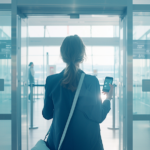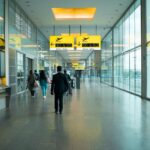The CAT-2 system captures a live photo of the traveler and uses facial matching technology to compare it against the photo stored in the mDL. Additionally, the system verifies the traveler’s flight status for that day and indicates any applicable screening designations, such as TSA PreCheck eligibility.
TSA Federal Security Director at SMF Sid Hanna emphasized the importance of this implementation, stating, “Identity verification of a traveler prior to flying is a key step in the security screening process. Embracing the use of this type of technology will ultimately enhance security and increase the efficiency of our operation.”
The system includes several privacy and accessibility features. Photos captured by CAT-2 units are never stored or used beyond immediate verification. Travelers can opt out of facial matching in favor of traditional ID verification by TSA officers, and physical credentials remain accepted for those who prefer not to use mDLs.
The California Department of Motor Vehicles is currently offering mDLs to state residents at no cost, though enrollment is limited to 1.5 million participants. California joins 14 other states in offering mDLs compatible with TSA’s CAT-2 units.
This implementation aligns with TSA’s broader initiative to expand biometric verification technology across U.S. airports, with the agency emphasizing that digital IDs like mDLs offer enhanced security and privacy benefits compared to physical credentials by only sharing necessary information for identity verification.
Sources: Transportation Security Administration (TSA), Mobile ID World
–
February 7, 2025 – by the ID Tech Editorial Team







Follow Us